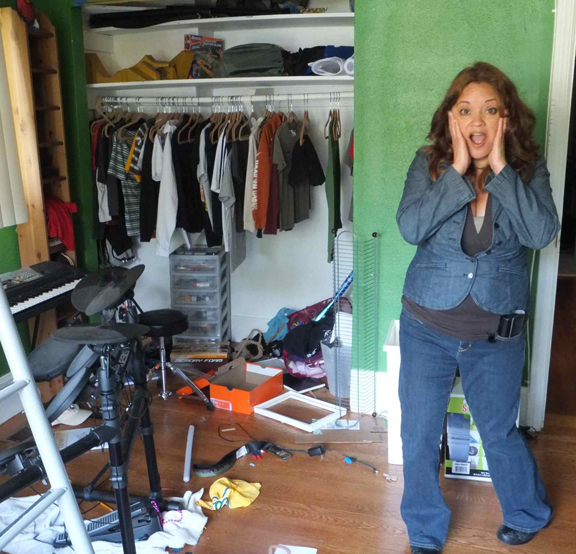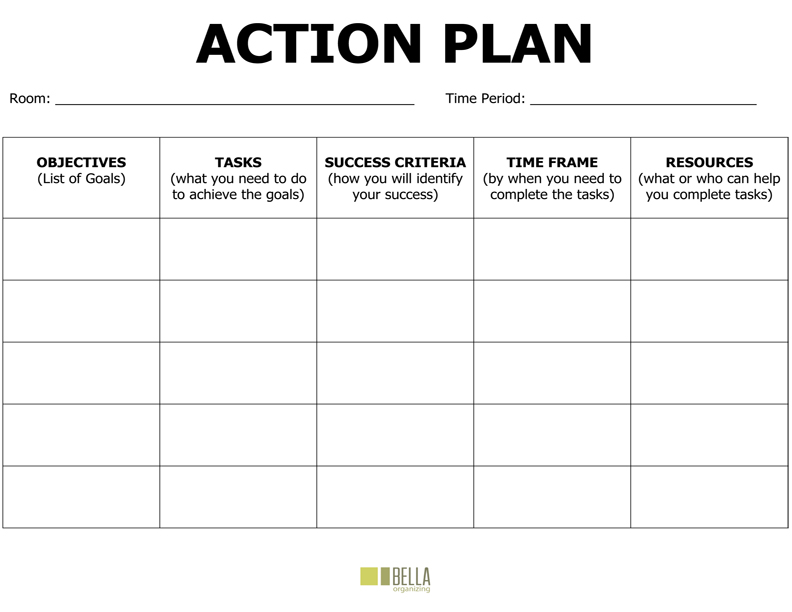If you are like many people, you dream of finding time to get started on a few home organizing projects. Here are 5 common mistakes to avoid and tips to stay on task and be productive:
#1 Trying to get another adult organized.
I often get calls and email from thoughtful family members, friends, and neighbors asking for help for someone they love that’s living a cluttered life. The disorganized person may or may not live with them. If you want to help someone declutter and get organized, start by gently letting them know why you are concerned, that professional organizers exist if they are interested in getting help, and then live by example.
If you are living with the cluttered person and it bothers you, have a gentle talk and make an agreement to set space boundaries where they put their stuff, and you put yours. If it’s a shared home office, draw an imaginary line down the middle of the room and keep your things on one side, and theirs on the other. Then keep your area neat and organized and tune out the others persons space. Yes, learn to TUNE IT OUT. Your own organized space can become an inspiration for the cluttered person to get their act together. In time, they may start looking to you for advice or help.
If someone asks you to help them get organized and you agree, it’s important to not push them to get rid of things, which can start a serious argument and damage a relationship. You need to earn their trust over time if you want to be effective, which can take great patience on your end. Read this article before beginning to work together. If it’s a serious clutter or hoarding situation that violates health codes or puts you and/or another person in danger, contact a specialist for advice. Bella Organizing assists with light levels and borderline hoarding, but for serious issues, consider learning more about the topic and gather resources through the American Psychiatric Foundation.
#2 Thinking you can organize everything at once.
An organized home isn’t built in a day. Getting organized is a process, a lifestyle change that is learned, develops and improves over time with regular practice, much like getting your body fit and toned. You may clean and organize a certain area of the house one day, but then it’s back to its cluttered state a week later if you have not kept up the cleaning. Instead of doing a big job all at once every six months (or years), get in the habit of cleaning and organizing an area a little at a time and more often. For example: your desk. Take 15 minutes at the end of each day to file paperwork and clear it of the days clutter. Set your phone alarm for daily reminders or put a big sign above your desk to remind you. Clean and organize one small space 15 minutes daily for 21 days in a row and magic will start to happen. Learn to love the process of organizing as well as look forward to the end goal.
#3 Organizing without letting go.
It’s a fact of life that we collect stuff. Like squirrels and nuts, we hunt and gather and fill our homes with wonderful goods. As more things enter the home, we find ways to store them in closets, cabinets, drawers, and buy new bins and baskets. The baskets and spaces start to fill and spill over. Time for another basket, closet, or storage unit?
No. It’s time to purge through what you have before thinking about another trip to the Container Store. Getting organized isn’t only about containing things, it’s about learning and practicing clutter prevention methods, and regularly letting go of things you never or rarely use. Every time you clean up, encourage yourself to let go of a couple things that are of no use to you and/or others in your home and take up valuable space where peace and clarity can reside instead.
#4 Allowing toys and kids clothes in the house without setting rules & guidelines.
How much do you remember owning when you were a kid? When you were 18, or 25? When younger, you don’t care quite as much about owning lots of things as you will when an adult. If you’re a parent with a child’s room or house filled with toys, clothes, and kid clutter, really think about how and why it got there. Who bought the toys? Who allowed these things inside the house over the years? Think back to the simplicity of childhood, how you didn’t need but a few, special things to make you happy.
Most kids are too young to understand the concept of feeling cluttered, and will live in it feeling weighed down without realizing they have a choice to live without it (recent studies have shown that collecting and hoarding can be learned in the home!) Help prevent scattered kids stuff and take a load off your kids themselves by not allowing any more children’s clothes or toys into the house until you’ve made some solid declutter decisions and set rules & guidelines together for a healthy in/out exchange.
#5 Organizing without a plan of action.
When’s the last time you jumped into a home organizing project without taking time to think about what you are doing and why? How did it turn out? How much better do you think the experience could have been or the process a bit more efficient with a little planning? Avoid rash actions that result in an argument with your housemates, partner/spouse, or kids, get organized faster, and enjoy longer lasting effects by setting goals and making a plan you independently or collaboratively work on over time. Use my free downloadable Action-Plan-Template to get started. Complete it yourself or together, stick it on the refrigerator or somewhere else that makes the most sense for it to be, and start making things happen…


